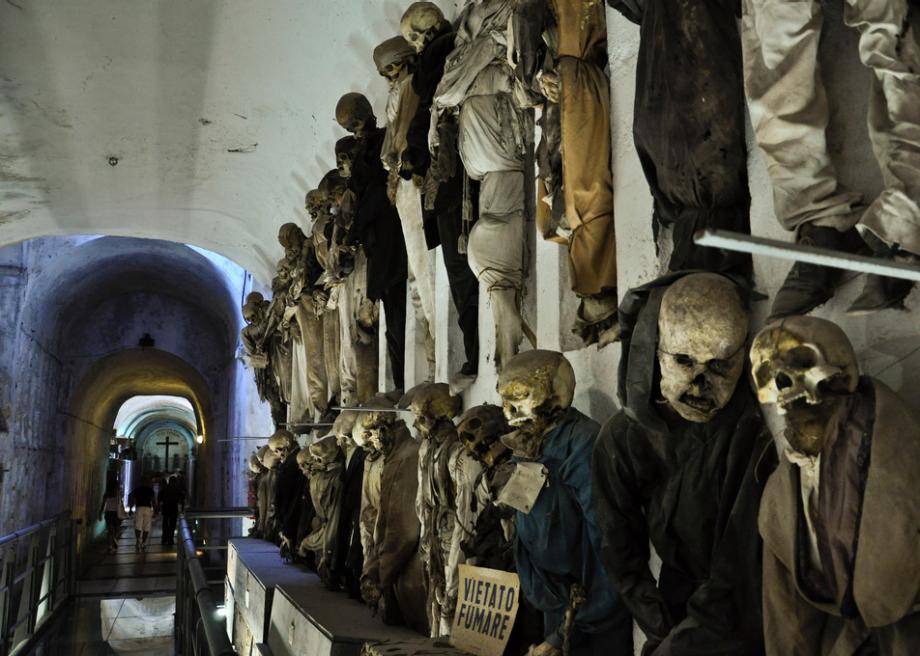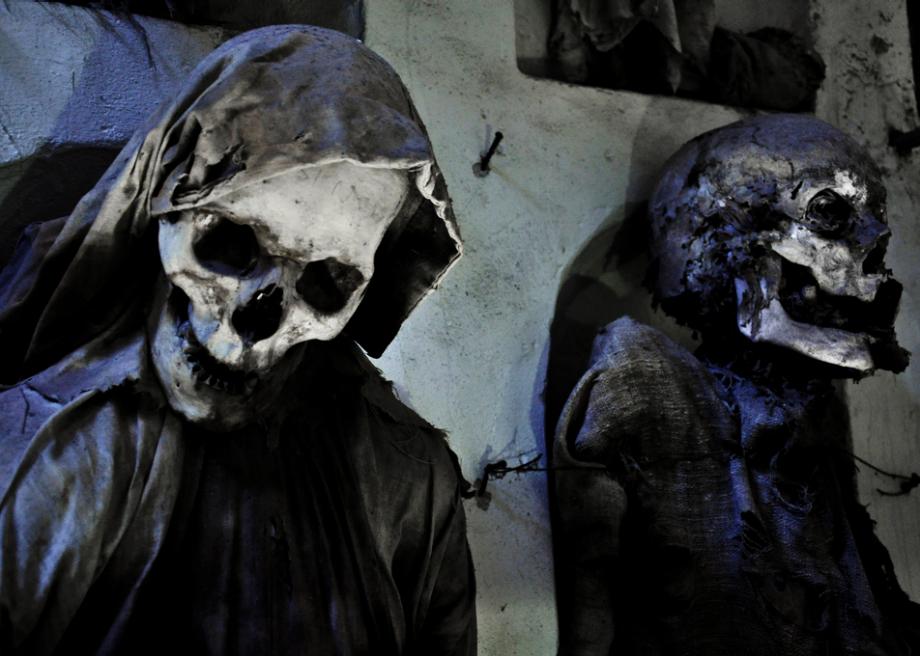The Corpse-Lined Hallways of the Capuchin Monastery Catacombs
Atlas Obscura on Slate is a blog about the world's hidden wonders. Like us on Facebook, Tumblr, or follow us on Twitter.
Eight thousand corpses in varied states of decay inhabit the musty, ill-lit Capuchin catacombs of Palermo in Sicily. Originally intended exclusively for monks, the passageways were expanded over time to make room for prominent locals, who paid to be buried in the holy vaults. Separated according to age, sex, occupation and social status, the mummified bodies are arranged in open coffins, hung from the walls in narrow corridors and piled on shelves.
In the Chapel of the Virgins, virginal girls—or at least, girls whose families declared them to be untainted by the horrors of sex—are displayed in faded and tattered white dresses under the inscription "We follow the lamb wherever he goes; we are virgins." They wear their best clothes, but their appearance is marred by caved-in noses, empty eye sockets and sunken cheeks. Many have wide-open mouths—due to a combination of decomposing facial ligaments and gravity—making them look as though they are screaming.
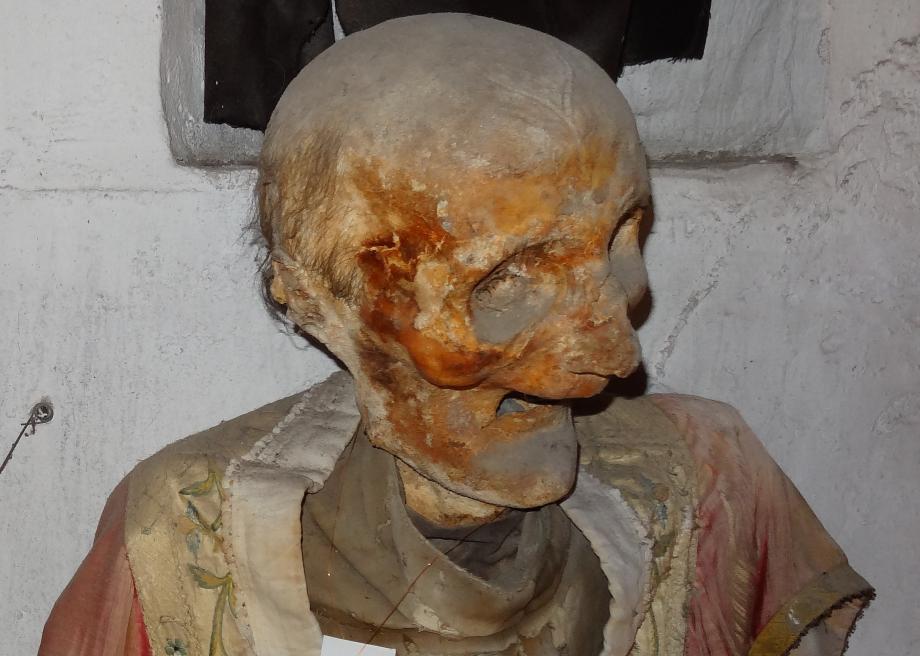
The particularly dry atmosphere allowed for the natural mummification of the bodies. Initially, priests would lay the dead on shelves and allow them to drip until they were completely depleted of bodily fluids. A year later, they rinsed the dried out corpses with vinegar before re-dressing them in their best attire and sending them to their designated eternal room.
The oldest corpse in the macabre collection is that of Silvestro da Gubbio, a friar who died in 1599. The most recent, Rosalia Lombardo, was only two years old when she was embalmed in 1920 after succumbing to pneumonia. The embalming procedure has kept Rosalia looking so well-preserved that she has been dubbed "Sleeping Beauty."
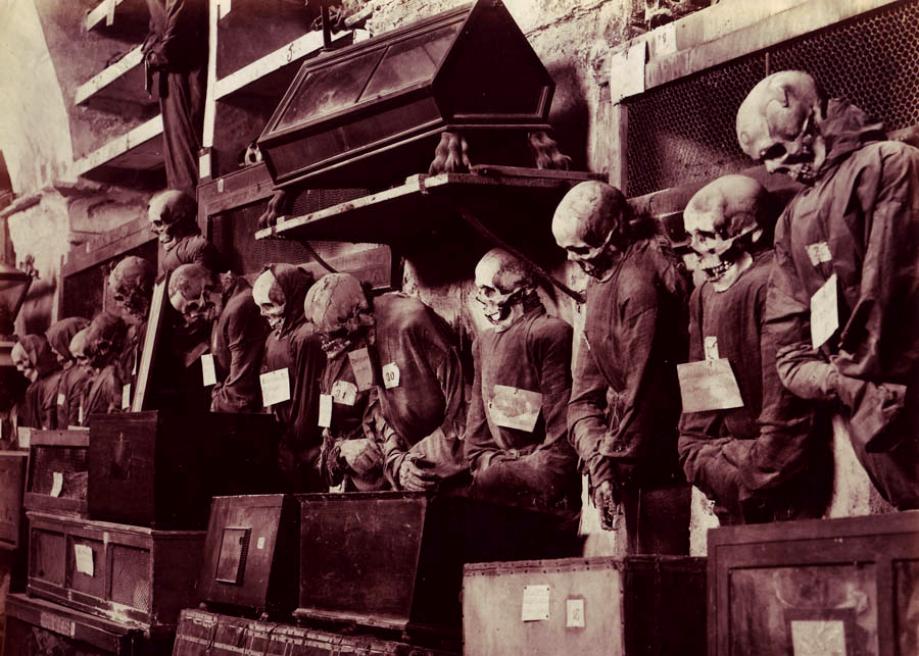
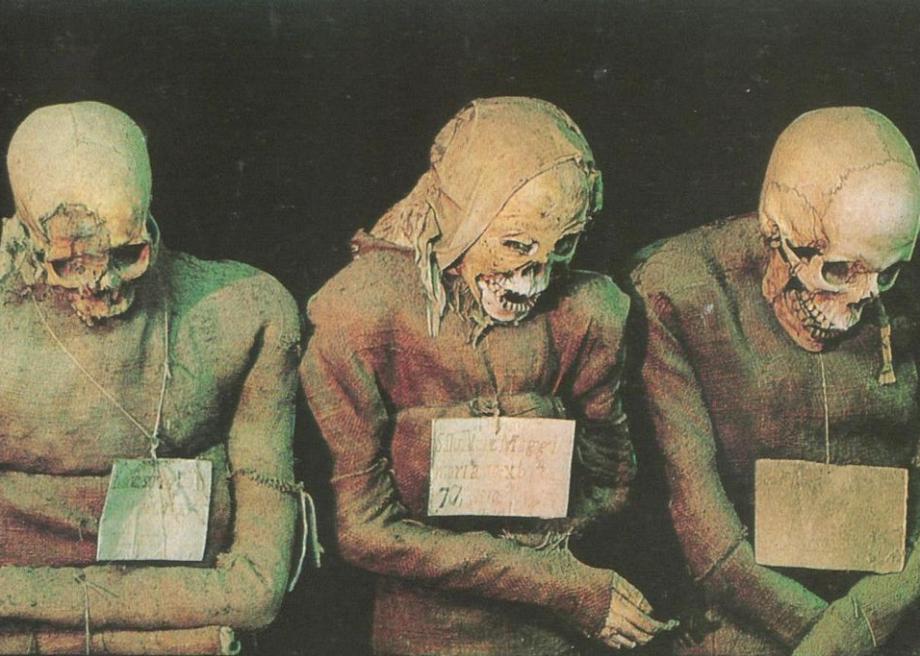
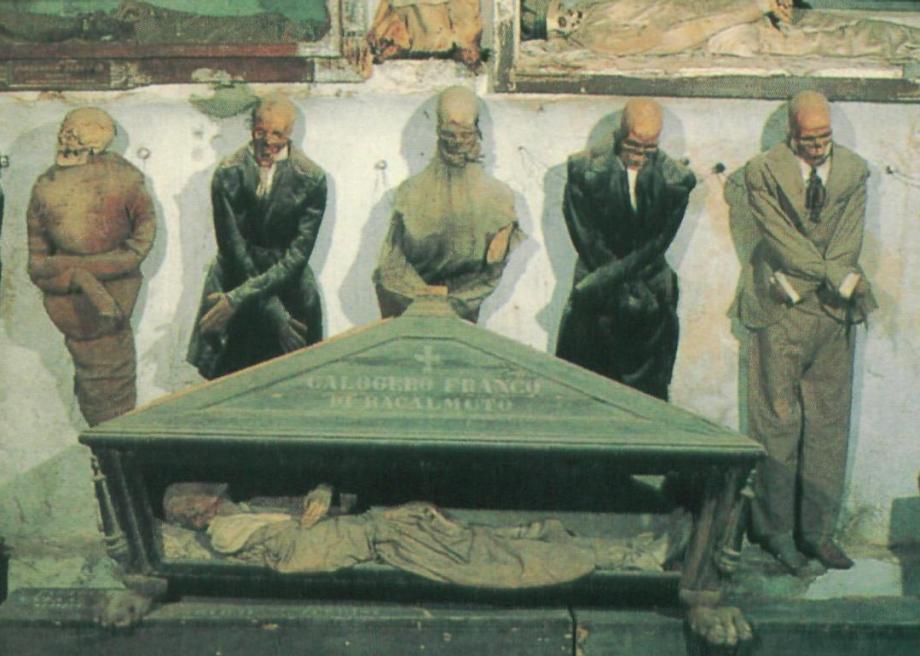
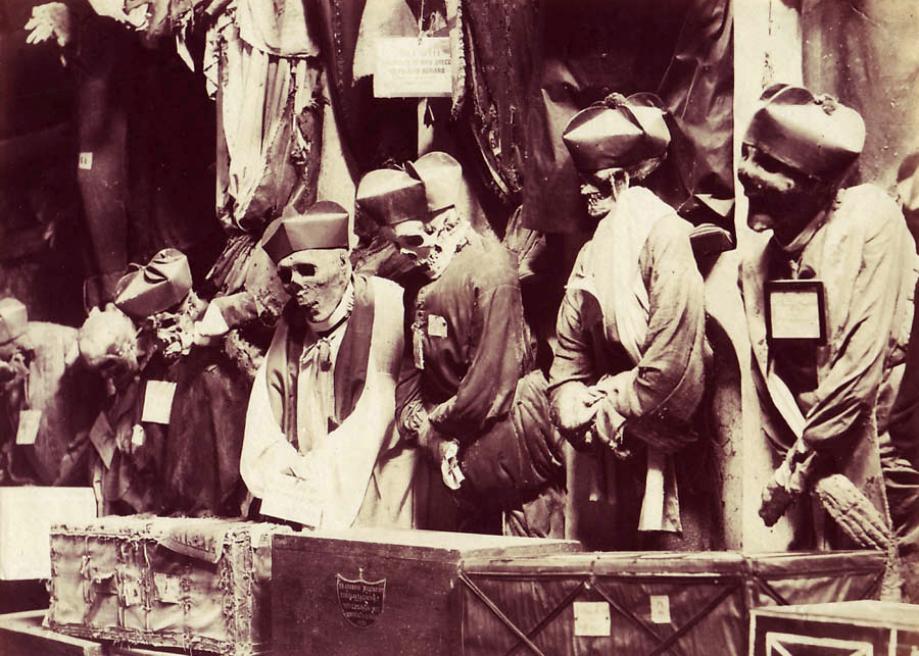
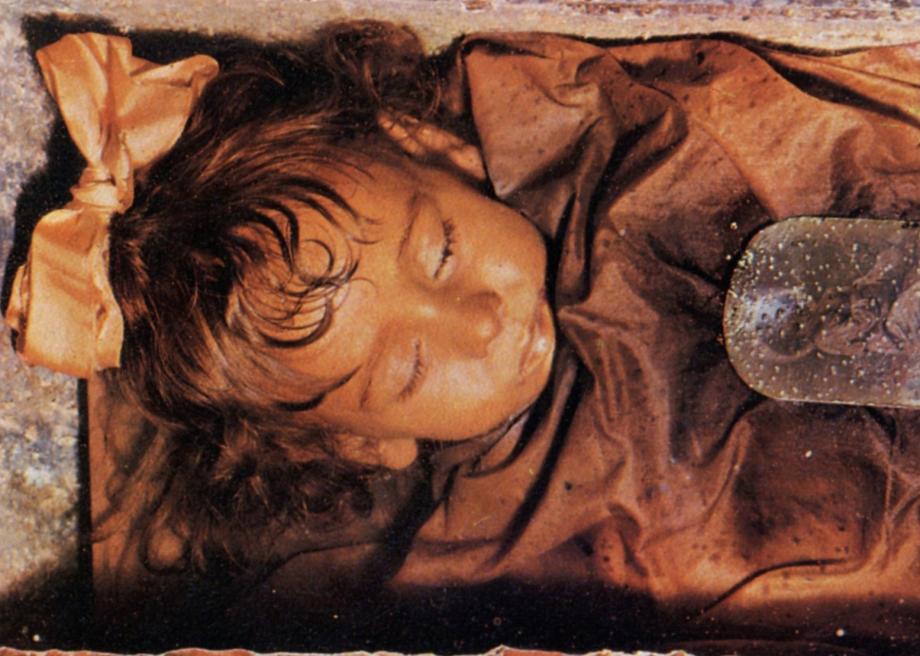
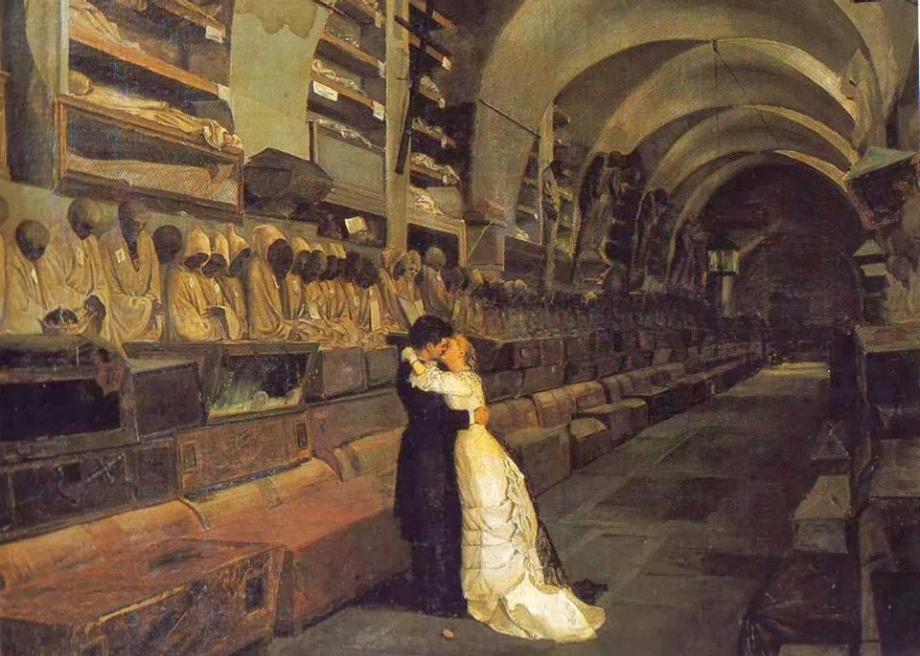
Other purveyors of preserved corpses on Atlas Obscura:

